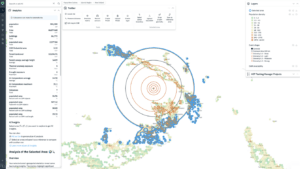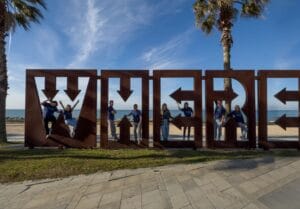Correlating OpenStreetMap data with population density helps activate disaster mapping solely where it has humanitarian impact

When a disaster strikes, better maps enable better response. Humanitarian OpenStreetMap Team (also known as HOT) often coordinates emergency mappers at the request of organizations like the Red Cross, or as an OpenStreetMap initiative. The challenges HOT faces are to specify the area that should be mapped and pick out the datasets that serve as a basis for volunteers’ mapping efforts.
HOT follows a standardized process of doing preparatory work before the team asks the broader mapping community to help. For each disaster that threatens people’s lives, HOT prepares a Disaster Size-Up document that describes the disaster, its geographic scope, and its humanitarian impact.
Such preparatory work may take a while, from several hours to an entire working day. During fast-unfolding emergencies, a few hours here and there make a big difference. That’s where Kontur was able to streamline the process through technology.
Kontur provided HOT with Disaster Ninja
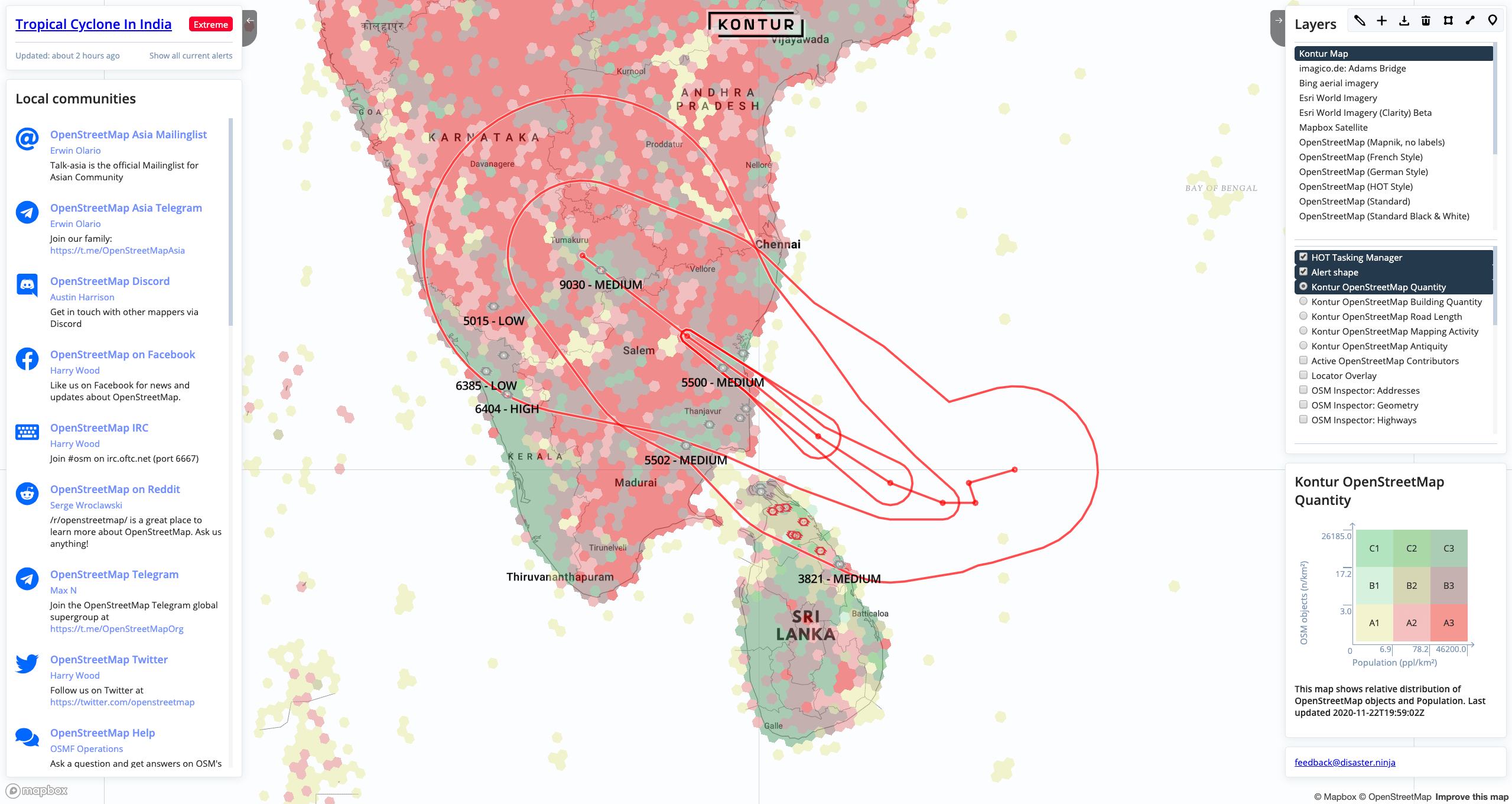
Kontur created Disaster Ninja dashboard to put together all required data for Size-Ups. The principal challenge was to correlate available data with population density to help HOT take action confidently when and where it is beneficial to actual people.
Building and maintaining the ultimate publicly available global population dataset became a fundamental component of Disaster Ninja. That’s where Facebook Population Density maps were put into the basis of Kontur Population. Since then we constantly improve the dataset by obtaining and processing all publicly available data and fixing all known issues to support the visualization behind Disaster Ninja.
After a year and a half since Disaster Ninja was first introduced to HOT, we interviewed Russell Deffner – HOT Response Coordinator – to know more about its usage during real activations and HOT activations themselves from Disaster Ninja utilization perspective.
HOT values
The key values for HOT are taking actions that are going to be beneficial to local communities and making sure that volunteer mappers’ efforts are utilized effectively maintaining their sense of usefulness.
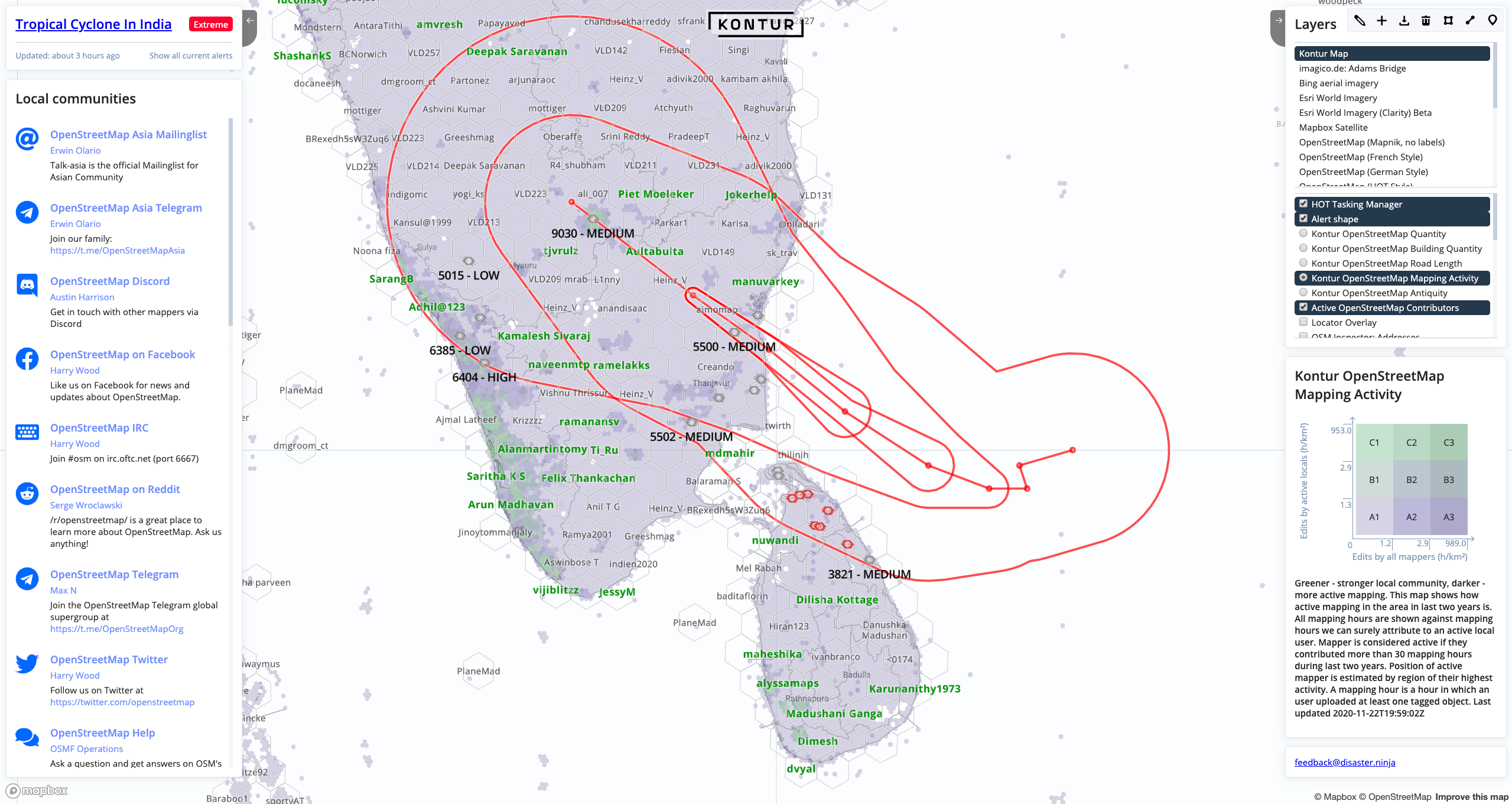
The most difficult thing to do for a response team comes down to making sure that activation is actually going to be a benefit to somebody and not be damaging to the local community. Not only the impact of the disaster is taken into consideration but also the existence of the actual users of the map.
‘Any activation should be useful in the long run because my biggest thing has always been if OpenStreetMap is going to be used. Even if it’s just by the local community, that’s fine,’ says Russell Deffner.
Workflow

The initial stage of any activation is where Disaster Ninja plays a key role. During Size-Ups HOT response team is determining the scale of the disaster, whether it is going to be a few days or months of mapping. Things like the population data, the OpenStreetMap completeness, and the activity of the local OpenStreetMap community are also explored during this stage. These basic elements of a Size-Up used to be time and effort consuming in the past.
‘Disaster Ninja is cutting the size-up time in half. Now it’s possible to do it within an hour to have a good feeling if there is a reason to activate or not,’ Russell Deffner continues. ‘I truly appreciate that you guys have put very helpful layers into one package because it’s definitely saving time.’
New challenges and new solutions
One of the arising questions that require a deeper look into it is getting to know if the map done within a project will actually be used. Old map data can also get in the way of mapping initiation. The objects on the map may be from a five years old project, since which things may have changed dramatically and there may be a viable reason to create a new project on top of it. HOT created an Information Manager position that will be focused on disaster services to face these questions.
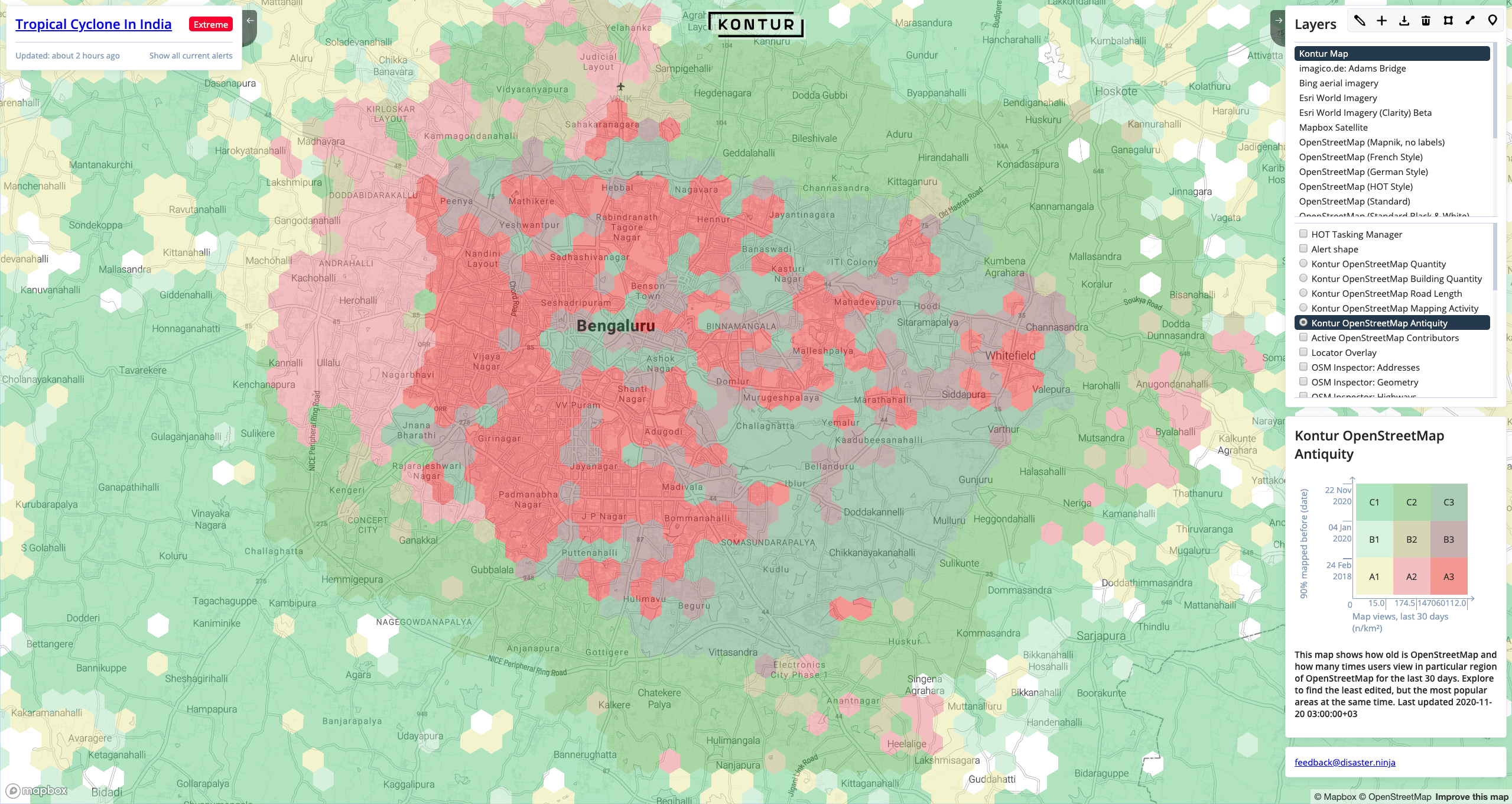
Disaster Ninja is exposing it by the introduction of the Antiquity layer. It shows the correlation of map views to its recency. It gives a good perspective on where people actually look and if the map data there requires being revised and updated.
Can a machine do the job of activation lead?
Tools like Disaster Ninja and systems like GDACS are built to automate some parts of activation leads’ job and reduce the cognitive load. On this level, a lot of responsibilities can be transferred to a machine. Although, on the coordination level the human aspect of HOT means a lot. Community outreach has to be done by people along with all the work made to ensure all the edits are made in accordance with the Organized Editing Guidelines of the OSM Foundation.
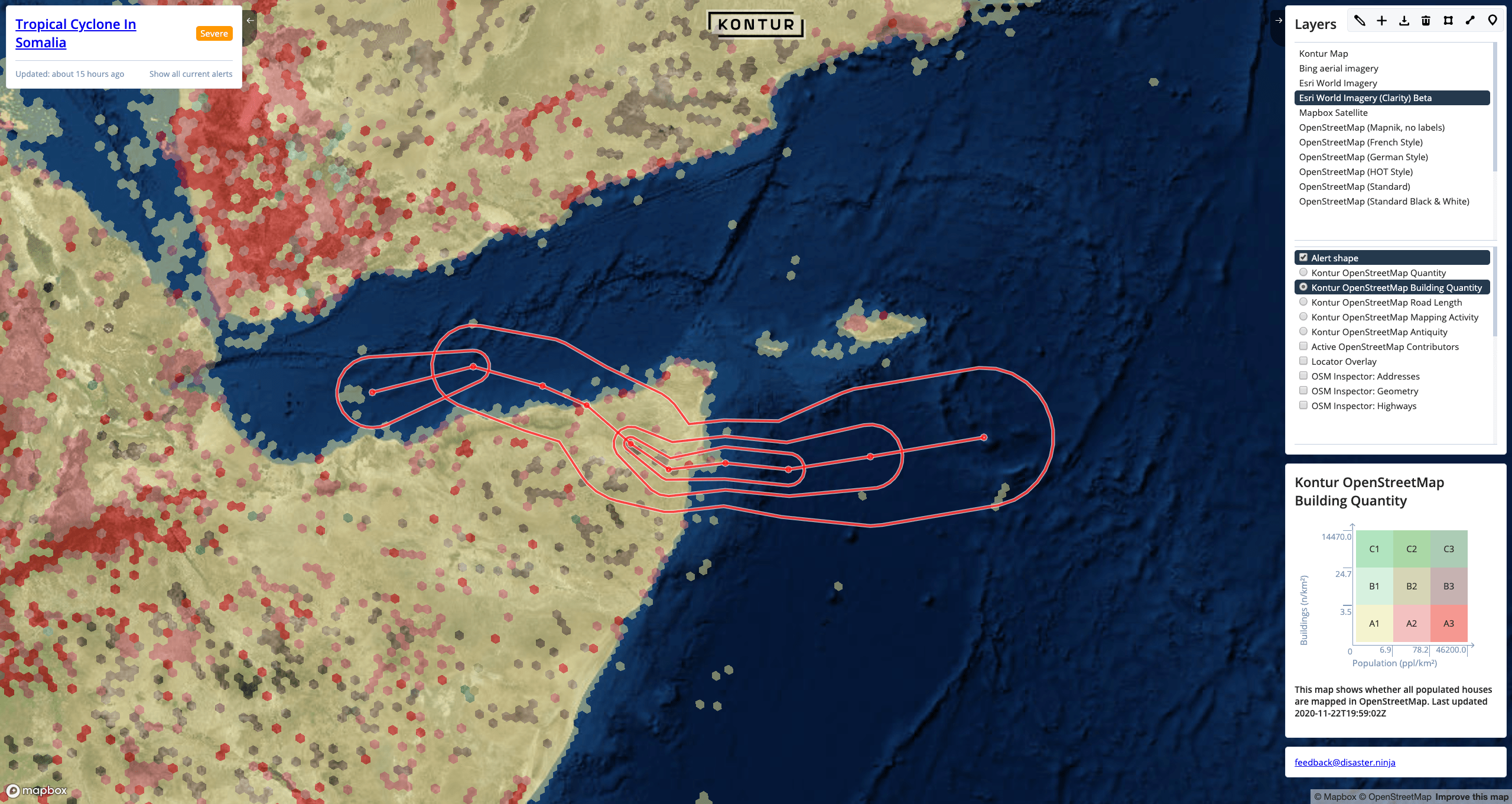
Using Disaster Ninja for activations
Cyclone Idai
Disaster Ninja was first introduced when cyclone Idai was active in March 2019. As a new tool for HOT it wasn’t used during the activation process, but the team reviewed mapping impact using it afterward.
Beirut explosion
Disaster Ninja was used after the Beirut explosion in August 2020. The local mappers had the area well mapped before the explosion and quickly updated the area after. HOT provided support in the form of consultation and hosted new imagery that came available. However, HOT got a request from the Red Cross to map outside of the port area. That’s when HOT Activation Leads got back to Disaster Ninja to look at the area outside of downtown Beirut and made the determination to engage volunteers.
Papua New Guinea earthquake
During the earthquake in Papua New Guinea in October 2020, HOT used Disaster Ninja which followed a no-activation decision.
Russell Deffner describes the case: ‘I was able to get a quick look at Disaster Ninja and realize there’s no reason to worry about sizing up this response because it’s an unpopulated area. The population estimates that you can get within the dashboard made it much simpler to say that the earthquake was affecting an area that didn’t have much population. So there may have been some effect, but it was not reasonable to take a large scale response.’
Typhoon Delta
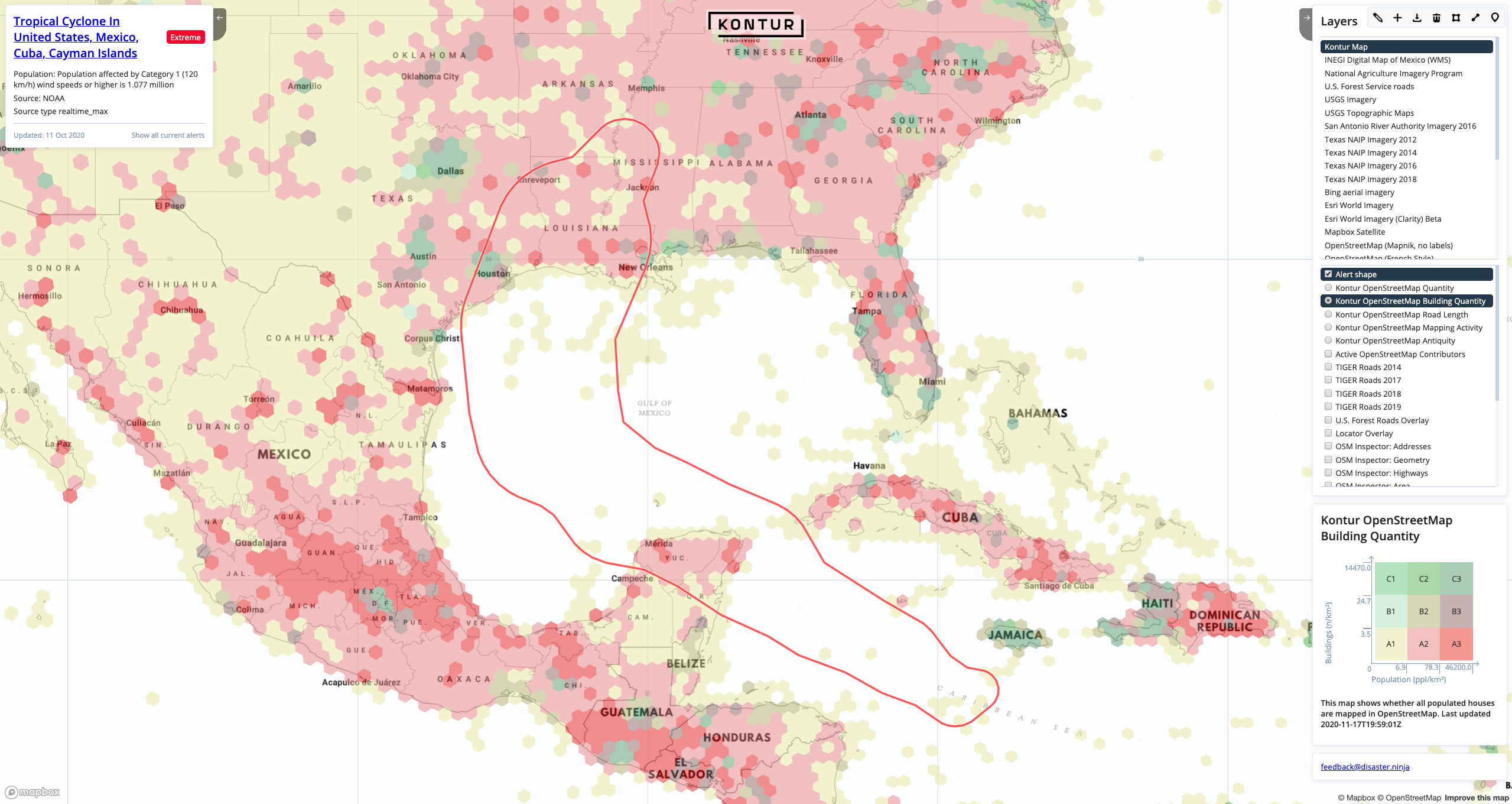
HOT cooperates with the Federal Emergency Management Agency for the US and its crowdsourcing unit. The day before typhoon Delta landfall the team was called into FEMA’s virtual office to coordinate the efforts. But since the US does not often use OSM in disaster response there was an insufficiently low likelihood of map data being utilized. That led to a no-activation.
Conclusion
Emergency mappers coordination involves quick decision making. This often means a trade-off between the speed of taking action and its benefits in the outcome. Automating the disaster Size-Up preparation process provides instant insights for Activation Leads and frees up precious time to maximize the efficiency of volunteer work.
In some cases using Disaster Ninja leads to no activation being called. It helps to avoid calling for remote mappers to regions with strong local OSM communities. And it assures volunteers’ efforts are not being wasted and their help is being brought only where it is useful to people.
Links
Disaster Ninja dashboard – explore analytical layers, find insights, contact local mappers, and more.
Kontur Population dataset – If you need some custom processing or a higher resolution version of this dataset contact us, please.
Humanitarian OpenStreetMap Team – an international team dedicated to humanitarian action and community development through open mapping.
Facebook High Resolution Settlement Layer (HRSL) dataset provides estimates of human population distribution at a resolution of 1 arc-second (approximately 30m).
If you have any questions about Disaster Ninja or you’d like to request a new feature, please feel free to contact the Kontur team with the chatbox on the bottom right corner of this page.


